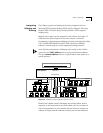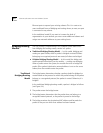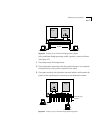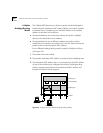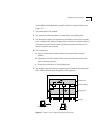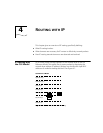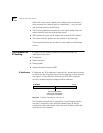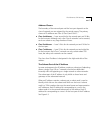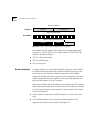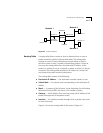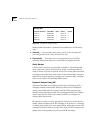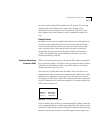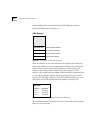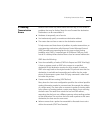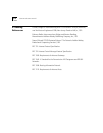
The Elements of IP Routing 4-3
Address Classes
The boundary of the network part and the host part depends on the
class of network you are assigned by the central agency. The primary
classes of IP addresses are Class A, Class B, and Class C.
■ Class A addresses — have seven bits for the network part and 24 bits
for the host part. Although only a few Class A networks can be created,
each can contain a very large number of hosts.
■ Class B addresses — have 14 bits for the network part and 16 bits for
the host part.
■ Class C addresses — have 21 bits for the network part and eight bits
for the host part. Each Class C network can only contain about 250
hosts, but many such networks can be created.
The class of an IP address is designated in the high-order bits of the
address.
The Subnet Part of the IP Address
In some environments, the IP address contains a subnet part. Subnetting
allows a single Class A, B, or C network to be further subdivided
internally while still appearing as a single network to other networks.
The subnet part of the IP address is only visible to those hosts and
gateways on the subnetted network.
When an IP address contains a subnet part, a subnet mask is used to
identify which bits are the subnet and which are the host. A subnet
mask is a 32-bit number that uses the same format and representation
as IP addresses. Each IP address bit corresponding to a one in the
subnet mask is in the network/subnet part of the address. Each IP
address bit corresponding to a zero is in the host part of the IP address.
See Figure 4-3.



